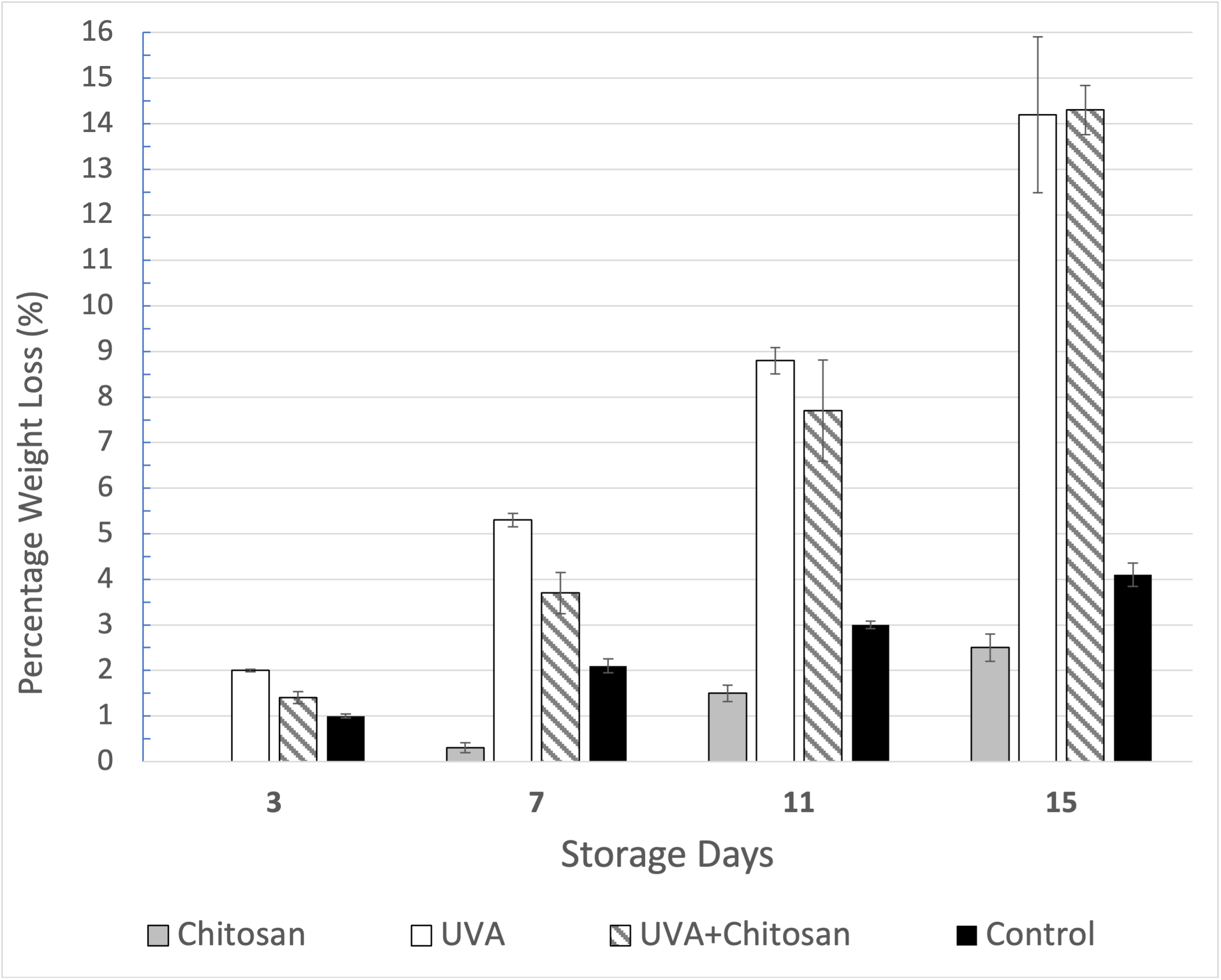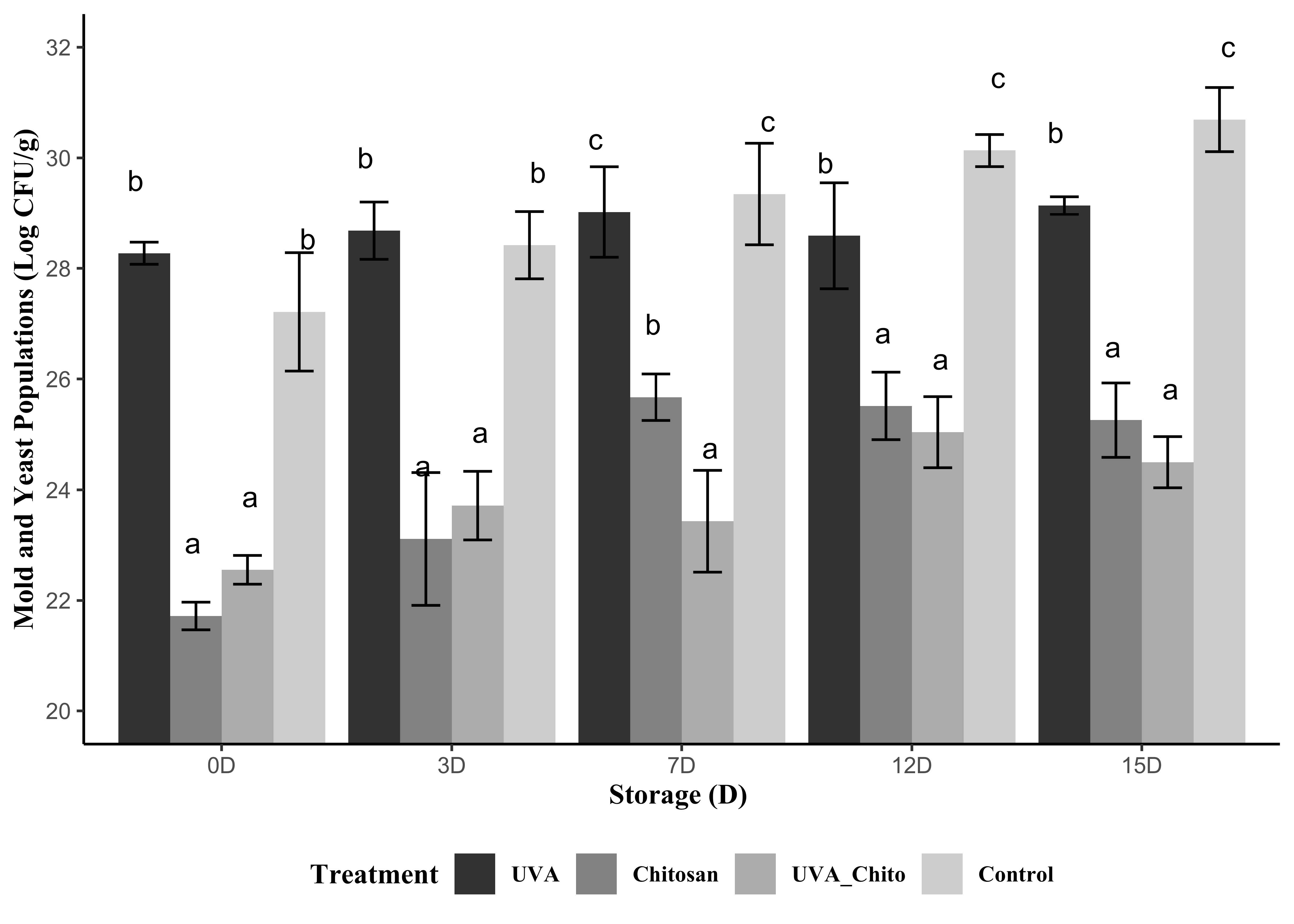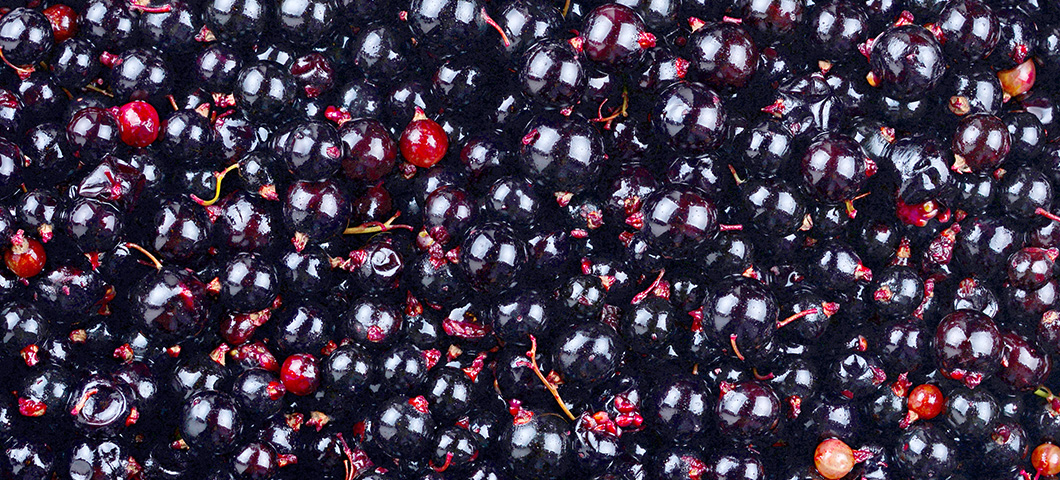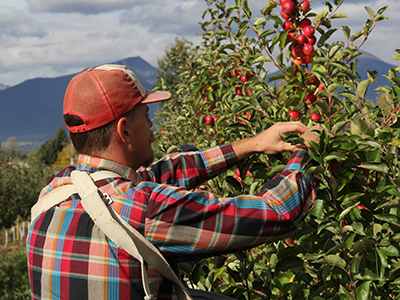Postharvest Evaluations of Blackcurrant Fruits with Chitosan and Ultraviolet A (UVA) Treatments
This is a summary of the manuscript, Postharvest Evaluations of Blackcurrant Fruits with Chitosan and Ultraviolet A Treatments, published in Appl. Sci. 2024, 14(24), 12052; https://doi.org/10.3390/app142412052.
Authors and affiliations
Zhuoyu Wang1, Andrej Svyantek1, Zachariah Miller1*, Aude A. Watrelot2 and Venkateswara Rao Kadium1
1Western Agriculture Research Center, Montana State University, Corvallis, MT, 59828, USA; zachariah.miller@montana.edu; venkateswararkadium@montana.edu
2Department of Food Science and Human Nutrition, Iowa State University, Ames, IA, 50011-1054, USA; watrelot@iastate.edu
*Correspondence: zachariah.miller@montana.edu
Summary
Fresh blackcurrants (Ribes nigrum L.) are typically processed into jams, juices, and syrups to mellow their strong, pine-like flavor. However, interest is growing in marketing them fresh as a niche superfood, due to their high antioxidant content.
This study tested whether two postharvest treatments—chitosan coating and UV-A light—could help preserve fresh blackcurrants during 15 days of refrigerated storage. Researchers evaluated berry appearance, firmness, weight loss, microbial activity, and nutritional quality.
All berries, including untreated ones, showed no visible signs of mold or decay throughout storage. Chitosan significantly reduced weight loss in the first week and suppressed microbial populations into the second, while UV-A light alone accelerated moisture loss and increased softening. The combination of UV-A and chitosan increased some health-promoting compounds, but this was likely due to dehydration and results were not significantly different from chitosan alone.
Key takeaways: Cold storage alone effectively preserved fresh blackcurrant quality for up to 15 days. Chitosan, UV-A, or their combination did not significantly improve quality during this period.
Introduction
Blackcurrants are gaining global attention for their nutritional value and market potential. Rich in vitamin C and anthocyanins (the pigments responsible for their deep purple color), they’re used in a variety of processed products. As consumer interest in fresh, health-promoting foods grows, so does the need to extend the shelf life of fresh blackcurrants.
Chitosan—a natural, edible coating derived from shellfish or fungi—has shown promise in reducing spoilage and retaining nutrients in other fruits. UV-A light (315–400 nm) may also help reduce microbial growth and enhance fruit quality, though it’s less studied than other UV wavelengths.
This study is the first to evaluate the effects of chitosan and UV-A light, both separately and combined, on postharvest blackcurrants.
Methods
Chitosan Treatment: Fresh blackcurrants were dipped in a chilled 1% chitosan solution (with glycerol and acetic acid) for one minute, then air-dried for three hours. Control berries were dipped in deionized water.
Storage Conditions: All berries were stored in commercial plastic clamshells at 0–4°C and 85–90% humidity for 15 days. Each container held ~70 grams of fruit.
Combined Treatment: For the UV-A + chitosan group, berries were coated with chitosan, spread in a single layer on trays, and exposed to UV-A light throughout storage.
Findings
Weight Loss
All berries lost weight over time. UV-A treatments caused the most weight loss, while chitosan slightly reduced it compared to the control.

Figure 1. Effects of postharvest treatments on weight loss. Each treatment contains three replicates. Bars indicate values are mean ± standard errors of replicates. Different letters correspond to mean values significantly different (p<0.05) by analysis of variance (ANOVA) and Tukey post hoc test on each sampling day.
Firmness
Berry firmness declined significantly across treatments by the end of the storage period. Chitosan-treated and control berries retained significantly more firmness (~125–150 gm/mm) than UV-A and UV-A + chitosan berries, which softened to ~100 gm/mm by day 15.
Physicochemical Properties
Soluble solids content (SSC, °Brix) was higher in the UV-A + chitosan group on days 11 and 15. However, this increase was due to water loss concentrating the sugars, not actual ripening. pH and citric acid levels remained stable across all treatments and time points.
Microbial Activity
No visible mold or decay was observed in any treatment group. To assess microbial suppression, researchers crushed berries and cultured fungi, including yeasts. However, this method doesn’t directly measure spoilage risk, since not all fungi cause decay. For example, yeasts are not harmful to consume and don’t cause berries to go bad.
Chitosan and UV-A + chitosan treatments significantly reduced microbial growth compared to control and UV-A alone. Even at 15 days, chitosan-treated berries had lower microbial counts than untreated berries had on day 0. UV-A alone showed little antimicrobial effect.

Figure 2. Microbial population measurements on blackcurrants during storage. Different letters correspond to mean values significantly different (p<0.05) during each sampling day by analysis of variance (ANOVA) and Tukey post hoc test. Each treatment at each storage day had three replicates.
Antioxidant Activity
Total antioxidant activity remained stable across treatments and over time. However, individual compounds showed some variation:
- Flavonoids and anthocyanins increased during storage.
- Polyphenols remained relatively stable.
- UV-A + chitosan enhanced cyanidin-3-galactoside, a health-promoting anthocyanin, beyond what could be explained by dehydration alone.
- Chitosan reduced levels of luteolin, quercetin, pelargonidin, and peonidin early in storage, though only luteolin remained significantly lower by day 15.
Conclusions
- Chitosan reduced weight loss through the first week and suppressed microbial growth through the second.
- UV-A alone accelerated softening and had minimal antimicrobial effect.
- Antioxidant levels were mostly unaffected by treatments, though some individual compounds increased over time.
- Combined UV-A + chitosan enhanced certain bioactive compounds but did not outperform chitosan alone in preserving overall quality.
In conclusion, refrigeration alone is effective for maintaining fresh blackcurrant quality for up to two weeks. Treating the fresh berries with either chitosan, UV-A, or their combined treatments are unlikely to be worth the investment for small-scale operations.
Funding Acknowledgement
This research was funded by the Specialty Crop Block Grant Program, Grant No. AM22SCBPMT1127.


